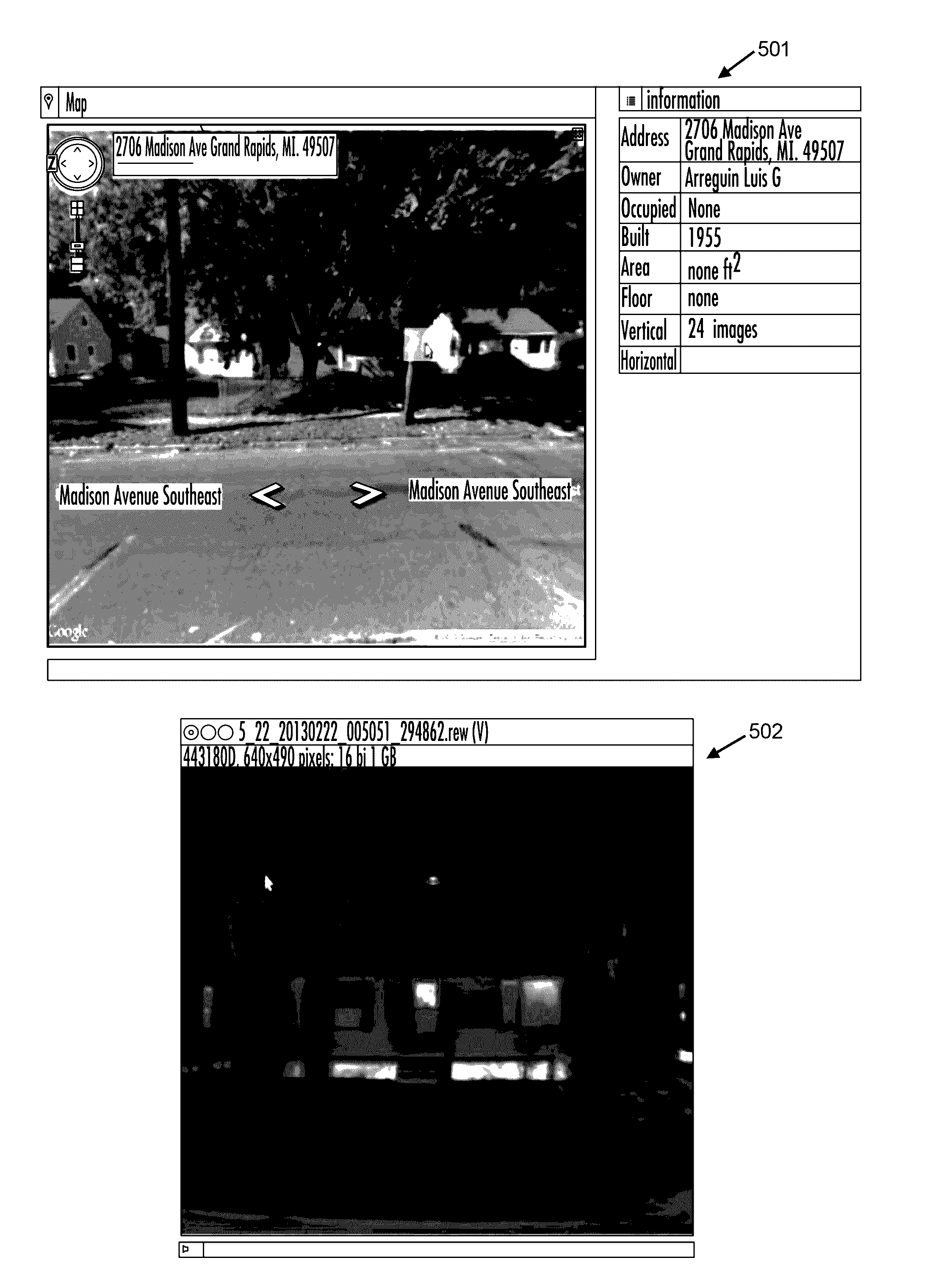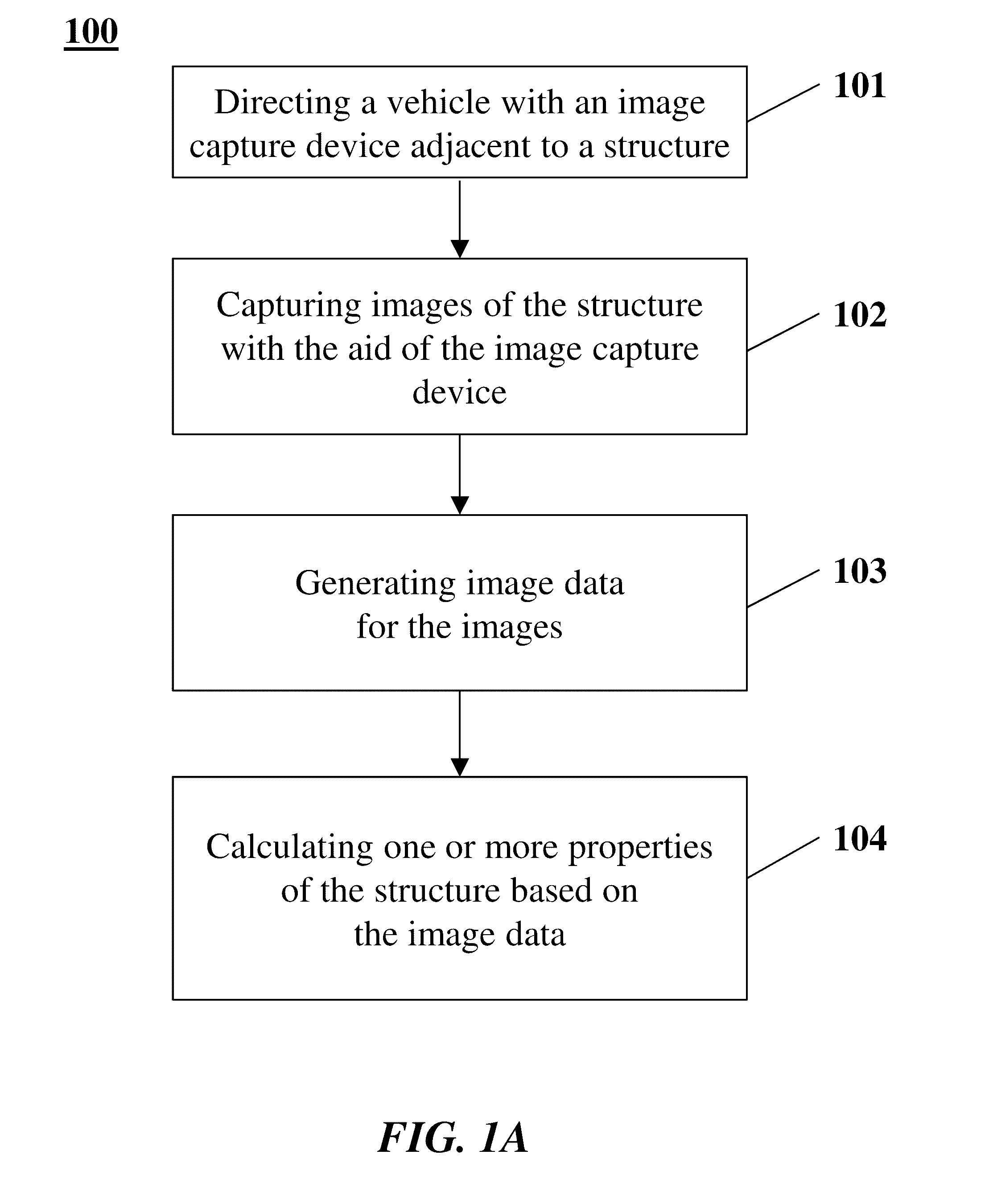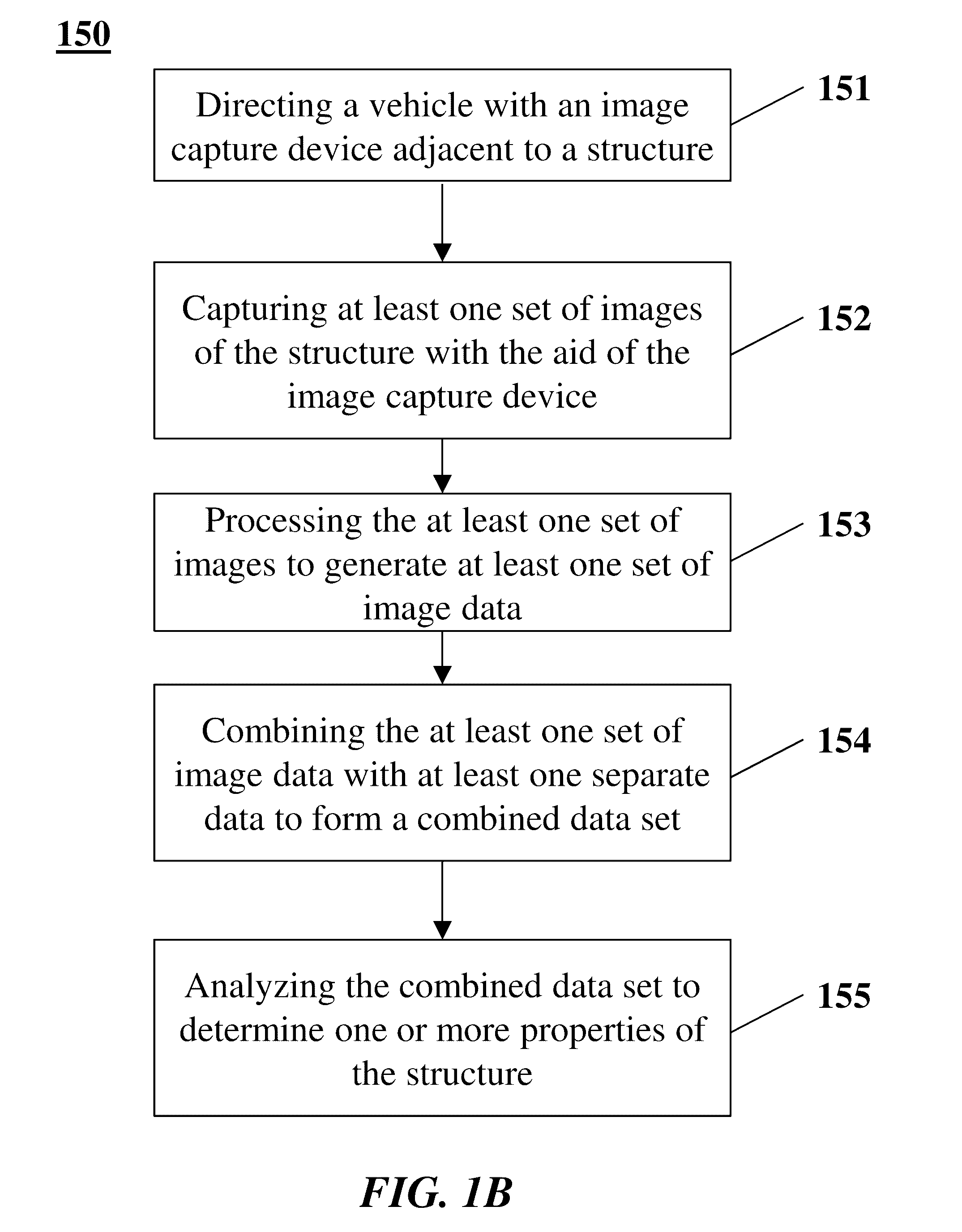Methods, apparatus, and systems for structural analysis using thermal imaging
- Summary
- Abstract
- Description
- Claims
- Application Information
AI Technical Summary
Benefits of technology
Problems solved by technology
Method used
Image
Examples
example 1
[0113]FIGS. 5 and 6 show example screenshots from a user application (app) provided in connection with an example embodiment of the present invention. The top portions 501 and 601 of FIGS. 5 and 6 displays homes adjacent to one another. A user of the app may select a home from the images shown at 501 and 601. Upon selection, the app displays a thermal image of the home to the user, shown at the bottom portions 502 and 602 of FIGS. 5 and 6. Each app provides an address of the building and indicates the number of vertical images associated with a given building (e.g., 24 images at 501 and 601 in the examples shown) which can be viewed via the app.
example 2
[0114]FIGS. 7-16 show example reports that can be generated by a system from the sets of images obtained of the structure and the subsequent analysis of the images. The reports can be generated for a user, such as an owner of the house or commercial building. The reports can be presented by way of an overall assessment of the structure.
[0115]FIG. 7 shows an example thermal image of a home 701 and various example metrics associated with the home. The metrics are derived by capturing images of the home and processing the images along with separate data, as described elsewhere herein. The metrics include comfort performance (or score) 702, efficiency performance 704, and total cost of ownership (TCO) performance 706, all of which are displayed as percentages or percentiles, with 0% being “bad” and 100% being “good.” The metrics can also include various risk scores, such as a score associated with an insurability risk or mortgage risk of the user. For the illustrated home, the comfort p...
example 3
[0126]Structural data can be used to predict utility usage, which can be used to train systems for deriving utility usage from images collected of structures. For example, building data (e.g., living area) can be combined with a surface temperature of a house to draw a correlation between building data and surface temperature. FIG. 17 shows a graph 1701 of an example correlation between a building model score (y-axis) and natural gas consumption score (x-axis). The correlation of graph 1701 can be used to predict natural gas consumption for other buildings. For example, from sets of images collected of a building, a building score can be calculated that is a function of the size of the building and the temperature of the surface of the building. From the building score, graph 1701 can be used to estimate a natural gas consumption score of the building.
PUM
 Login to View More
Login to View More Abstract
Description
Claims
Application Information
 Login to View More
Login to View More - R&D
- Intellectual Property
- Life Sciences
- Materials
- Tech Scout
- Unparalleled Data Quality
- Higher Quality Content
- 60% Fewer Hallucinations
Browse by: Latest US Patents, China's latest patents, Technical Efficacy Thesaurus, Application Domain, Technology Topic, Popular Technical Reports.
© 2025 PatSnap. All rights reserved.Legal|Privacy policy|Modern Slavery Act Transparency Statement|Sitemap|About US| Contact US: help@patsnap.com



